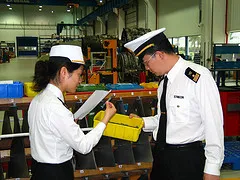
Tightening bites: China’s Flash Manufacturing PMI drops to 48.9 in July
This is the first time flash PMI fell below 50 in a year.
HSBC expects industrial growth to decelerate in the coming months as tightening measures continue to filter through.
Here’s more from HSBC:
| July's flash PMI fell below 50 for the first time in a year, reflecting slower manufacturing growth momentum and implying that June's industrial production rebound was temporary. We expect industrial growth to decelerate in the coming months as tightening measures continue to filter through. That said, resilient consumer spending and continued investment in ongoing mass infrastructure projects should support a GDP growth rate of almost 9% for the rest of this year. Facts Production growth slowed largely because of cooler domestic demand. The new orders sub-index contracted for the first time since July 2010, printing 49.5 in July vs. 50.4 in June. The new exports orders sub-index improved slightly from previously, but stayed below 50 for the third straight month at 48.4. Together, both readings suggest that new business flows are slowing not only because of weakness in external but also domestic demand. The latter can be attributed to the continued filtering through of Beijing's tightening measures. Inventory-wise, stock of finished goods fell at a slower pace, recording 47.9 in July compared to 46.7 in June. Stocks of purchases however hit the lowest level since April 2009 from 48 in June to 45.2 in July, as purchases declined for the second straight month in response to lengthening supplier delivery times. As a result, new export orders minus inventory (finished goods) ratio yielded its weakest reading in a year, of 1.5, compared with 3.7 in June. Lackluster manufacturing activities, in turn, translated into a marginal deterioration of hiring activities, seeing the employment sub-index stay below 50 for the second consecutive month - 49.4 in July vs. 49.8 in June. Output prices continued to ease in July, when its sub-index fell to 50.8 from June's 51.1, below the series' long term average of 53.4. July's input cost sub-index also stayed far below its long-term average of 60.2, at 54.5. A slower pace of output price inflation despite a slight pick up in input price inflation could add pressure upon manufacturer profit margins. But from Beijing's viewpoint, it is an encouraging sign that non-food inflationary pressures are starting to recede. Implications |
Photo from Ewan McIntosh

















 Advertise
Advertise








